PRESERVING A MILITARY LEGACY FOR FUTURE GENERATIONS
The following Reflections represents SK1 Richard Lee Wailes’s legacy of his military service from 1968 to 1989. If you are a Veteran, consider preserving a record of your own military service, including your memories and photographs, on Togetherweserved.com (TWS), the leading archive of living military history. The following Service Reflections is an easy-to-complete self-interview, located on your TWS Military Service Page, which enables you to remember key people and events from your military service and the impact they made on your life. Start recording your own Military Memories HERE.
Please describe who or what influenced your decision to join the Navy.

I joined the Navy because of my family’s military history. My grandfather was drafted into the National Guard in WWI and was one of the original members of the California National Guard 40th Infantry Division., assigned to the 115th Sanatiation Train. He served in France as a Saddler Private caring for horses and was stationed in France from 1917 to 1919. He was then discharged and returned to Colorado and then to Idaho.
My father attempted to join the Navy during World War II. When he went to the Naval recruiters, he was told enlistments were closed. After he got to the car, he heard on the radio that they would be open until 4:30 (about an hour). And enlistments were still open. He went back in, and as the elevator doors closed, he saw the recruiter walk out of the other elevator and out the front door. His draft notice was waiting when he got home. He served in the Army Air Corps and became an aircraft mechanic and flight engineer while based in Bangalore, India. I had three Uncles who joined the Navy in WWI; two were Cooks, and one was a Radioman. All served on ships in the Pacific Campaign.
During Vietnam, I had a Cousin who joined the Navy about four years before me. I chased him in rank from the day I joined, hoping to catch up with him in pay grade. It never happened.
The Vietnam War draft also influenced me. My draft number in 1968 was 3, so I knew I was going to be entering one of the services. Some say as to where I was going, besides on a ship, the platform is the target, inland in the field, the individuals in the groups become targets. The jungle was not a place I wanted to be. I had graduated from high school with a D+ average and knew I would not be accepted to a college, and my fiancée still had her senior year of high school to go. So there was no way to get a deferment.
Whether you were in the service for several years or as a career, please describe the direction or path you took. Where did you go to boot camp, and what units, bases, ships, or squadrons were you assigned to? What was your reason for leaving?

I attended boot camp at RTC San Diego, and after that, my first command was the cargo ship USS Procyon AF-61. I started on deck force, and then I was talking to an SK. Because I could type, he took me to the SKC, where I spoke with the supervisor and was instructed to submit a chit to transfer divisions. Both my leading petty officer and division officer checked the disapproved boxes. The Deck Officer had spoken with the Supply Officer, and I was approved to transition into a storekeeper role. After I had been in the division a while, an SK2 noticed I was not doing anything to advance. He asked me if I wanted to advance. When I said yes, he told me, “OK, see these, have mine. I don’t really care if you get yours or not. If you want to make it, then come see me during off time, and I will help you”. I got the message and started getting the education I needed to advance in grade.
I got a PNA on my first test and was designated an SKSN. At least I got the rating and knew that if I got stransfered somewhere else, I would b in Supply. I took the Third Class test twice and made it for the third time. This became standard for me. All the way to SK1, I took the test three times, making it on the third try. I failed one test for SK2. This was the only advancement test that I ever failed.
My second command was USS Ticonderoga CVS-14, an Essex-class WWII carrier. Just before I left the Procyon, I was informed that I would be advanced to SK3, and after reporting in, I was officially advanced to SK3. While there, I worked at night on what was called the 1114 deck (it told where things were, unit price, etc.). I found out I was eligible for sea/shore duty, put in a request, and was able to get transferred to shore duty.
The shore duty and third command was Marine Corps Air Station (MCAS) Yuma, AZ. I maintained the station’s Individual Material Readiness List (IMRL) during my tenure. It was quite interesting, as the Marines kept trying to tell me I would do what they did, and I fell back on Navy regulations, telling them no, I would not until the Navy changed the regulations or I was assigned to the Corps the same way Hospital Corpsmen were. Until that happened, I would follow Navy grooming and exercise directives.
I got married while there, and my new brother-in-law, PN1 Greg, talked me into applying for the Training and Administration of Reserves (TAR) program. I had been advanced to SK2 while in Yuma, and after joining the TAR program, I discovered that it was a very small community, and advancements were not easy to obtain. I served on independent duty at the Naval Reserve Center Monterey / Pacific Grove and helped out at the Naval & Marine Corps Reserve Center San Bruno/San Jose, CA.
I was sent to SK “C” school for aloat training, then on two Naval Reserve ships, USS Southerland DD-743 and USS Durham LKA-114, I made SK1 shortly after reporting to the Southerland and ended up being the leading/senior SK on both commands.
I then went to the Naval and Marine Corps Reserve Center Mattydayle (Syracuse), NY, again on in-depth duty. After reporting, I was sent to an SK training course at the Chief of Naval Reserve, New Orleans, where I helped the class get the highest average score on final exams, was made a class honor student, and my overall score tied with SK1 DIeter Irving for the highest overall individual score. In December 1983, I was able to get an early transfer to the Naval and Marine Corps Reserve Center Salt Lake City (my hometown is a suburb of SLC) again on independent duty.
Part of the work at the Centers was berthing and feeding of reservists when they came to drill for the weekend. I also ordered clothing for all the Surface, Shore, and Construction Battalion unit members.
My last command was the Naval Reserve Readiness Command Region 20 at Treasure Island, San Francisco. I worked with SKCS Bob Betters and was the senior non-chief storekeeper.
I took the SKC (E-7) test ten times, was board-eligible ten times, and was passed over ten times. The last time it happened, I was in my 20th year, so I put in my papers to retire at the end of 21. It was suggested that I stay one more year and take on more tests. I had decided that at 21 years, I had done enough, and I was not going to be advanced to E-7.
If you participated in any military operations, including combat, humanitarian, and peacekeeping operations, please describe those that made a lasting impact on you and, if life-changing, in what way?
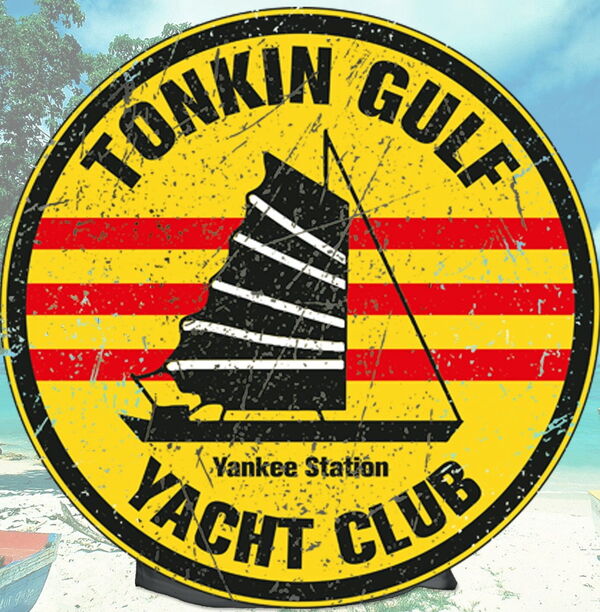
I made three Westpac cruises and went into the Vietnamese waters. My first ship, USS Procyon (AF-61), did underway replenishments in both the Yankee Station and Market Time areas. While in those areas, we replenished multiple types of ships underway and stationary. I recall the crew of an MSO boarding the ship for showers and to use the ship’s store. We were in and out of multiple VN ports. Vung Tao, Ha Tien, and Da Nang Cam Ranh Bay provide food stores to other military commands.
While on market time in 1969, the Procyon transferred 32 tons of provisions to 17 customer ships in 42 hours. This was so great because we were a completely manual operations ship. All cargo was prepared and netted for transfer by hand from 5 different cargo holds. There were no pallets for our use. I was given my first leadership responsibility there and, as an SKSN, was made Hold Petty Officer for Cargo # 4. I was assigned a few E-4s, and I had to learn how to manage positional authority.
Procyon was never directly involved in active combat.
Of all your duty stations or assignments, which one do you have fondest memories of and why? Which was your least favorite?

Believe it or not, my favorite was the USS Procyon (AF-61), my first command. There were only 250 men on the ship and 15 officers. With our mission, you get to know just about everyone. During breakouts and unreps, everyone was involved, and we truly worked as a team. My UNREP job on my first cruise was spent as the port phone and distance man. This line during UNREPS was bridge-to-bridge communication.
As noted, while on the Procyon, I was a cargo hold petty officer and SKSN. I had several E-4s working in the hold who had a problem with my positional authority. That issue was resolved, and several times during that cruise, we were noted as being the best cargo hold by being the closest to the estimated netting during breakout and UNREP.
I believe that the worst station was probably NRC Monterey/Pacific Grove. I was transferred there directly from Yuma, AZ; the only training I received was a slam dunk OJT from the SK that I was relieving. Talk about being unprepared. While there, the command moved from the Coast Guard Station in Monterey to the old Fleet Numerical Weather Center building in Pacific Grove. I also got involved with the Naval Sea Cadet Corps there and ended with an appointment as an LT and the Commanding Officer of the Monterey County Division USNSCC.
From your entire military service, describe any memories you still reflect back on to this day.
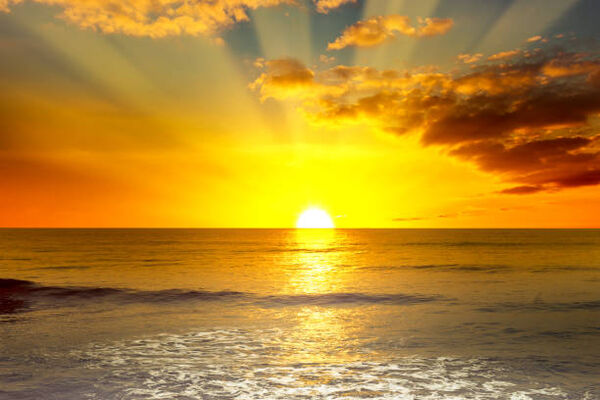
There is only one thing that I have and will always have: a night off the coast of Vietnam in Market Time. The clouds were scudding; there was heat lightning. The Procyon was all lit up like the Love Boat. There were folks up forward listening to Armed Forces Radio, tapes, and even record players. People were on the mess decks playing cards, and we had a movie being shown outside on the hatch of #4 cargo hold. We had a ring of LBGBs around us. While standing on the main deck, I looked over towards the shore, saw star flares going up, and saw tracers in the night. It is indeed a truly surreal event. The “P” was out there all lit up. We were enjoying a simple night at sea, and roughly 20 miles away, there was a firefight, and guys were buying the farm. It still doesn’t make any sense to me.
While on our way through the Sea of Japan, we had a man overboard call at about 2330 hours. What made this memory so vivid is that you interacted with everyone on this ship and knew something about most of them. Some of them were close friends.
The fantail watch reported seeing a bobbing light and hearing a whistle. So, we went to man overboard stations. I spent the time at that muster, wondering who had gone over. We were released from quarters as everyone was accounted for. To this day, I keep wondering if there was really someone out there that we could not find. I have thought of the feelings of someone floating. There is a life vest watching a ship steam away and being left all alone in the middle of the ocean.
There was one morning unrep when we were working with an Aircraft Carrier and were going west. I saw the sun come up over the horizon and took a picture of the fantails of both ships, with the F-4s on the flight deck and the sun coming up behind them. What a beautiful moment.
What professional achievements are you most proud of from your military career?

I have received several awards. My most significant achievement during my time in the Navy was training many SKs, and every one of them made the next grade the first time up.
I also worked with the Naval Sea Cadet Corps as Commanding Officer of the Monterey County Division in Monterey and the J. B. Stockdale Division in Syracuse, New York.
I entered the Realm of the Golden Dragon in December 1968 on the Procyon.
In April of 1971, I became a Shell Back while on the USS Ticonderoga.
In 1976, while at NRC Monterrey / Pacific Grove, I received a letter of commendation from RedCom20 for assisting the Naval and Marine Corps Reserve Center San Jose in bringing their supply department up to standards.
This is another letter for helping the USS Southerland DD-743 obtain the Blue Supply E for excellence in 1979 while I was the leading SK.
After reporting to N&MCRC Mattydale, I was sent to supply the ashore class at NAVRESSUPO in New Orleans, which is probably the biggest SK class of the ones that they teach there. The SK class does not always acknowledge an honor student. I was noted as the honor student of that class for helping others actively and reserves to achieve the highest class grade and grade average to that date. It was also noted that I had personally tied for the highest individual scores to that date. I have other letters of accommodation, which are nice; this one was the icing on the cake.
Of all the medals, awards, formal presentations, and qualification badges you received, or other memorabilia, which one is the most meaningful to you and why?
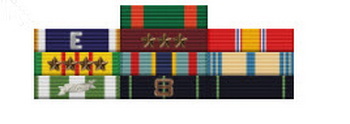
That would be the E ribbon from the tour on the Southerland because my crew, the S-1 division, had an impact on their high performance and contributed to the ship being awarded the Battle E.
Which individual(s) from your time in the military stand out as having the most positive impact on you and why?
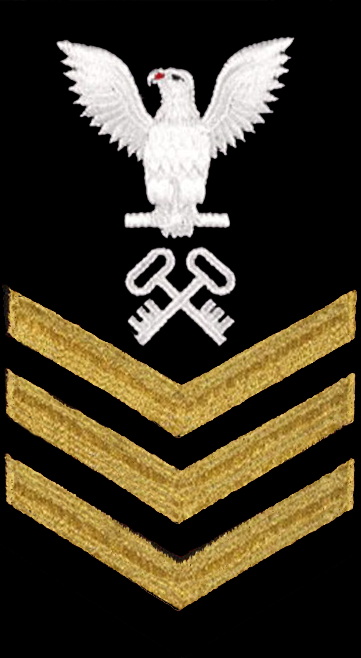
The SK2 on the Procyon prompted me to study to advance and helped me understand that my advancement rested on me and my ability to reach out for what I wanted.
The other was SKCS Thomas. McGovern on the Southerland. Once, I asked him how to do a job, and he said, “Look in the Book. I had taken a course on the book (NAVSUP P-485), but I had never learned to use it.
Because of Tom, I developed a training plan for my crew that also became an SOP book for the duty SK on the Southerland. I used the same SOP training book on the Durham.
List the names of old friends you served with, at which locations, and recount what you remember most about them. Indicate those you are already in touch with and those you would like to make contact with.

USS Procyon AF-61 from 1968 to 1970, when we decommissioned her. I don’t remember any real names, just some nicknames. Jesse Cooper (Teddy Bear) from Legget, California. An SN nicknamed Pickle. Len “Spud” Budinias, I believe he was from Pennsylvania.
USS Ticonderoga CVS-14 Mike McVay, Art Frankenberger.
MCAS Yuma, AZ: John Tomlinson, my Marine roommate, Pyro, and my Marine friend Lester Keller, who married a local girl named Vicky.
NRC Monterey/Pacific Grove J. J. Volk
USS Southerland DD-743 Jeff Maddocks SK2 Willie McCain SK3, LT Matthews SC, Gerard Bus MM3 Terry Coyle EM1, Ronald A. McDonald GMT1, who nicknamed me Josey, SN McCammon from Idaho (I sold you a car).
Can you recount a particular incident from your service, which may or may not have been funny at the time, but still makes you laugh?
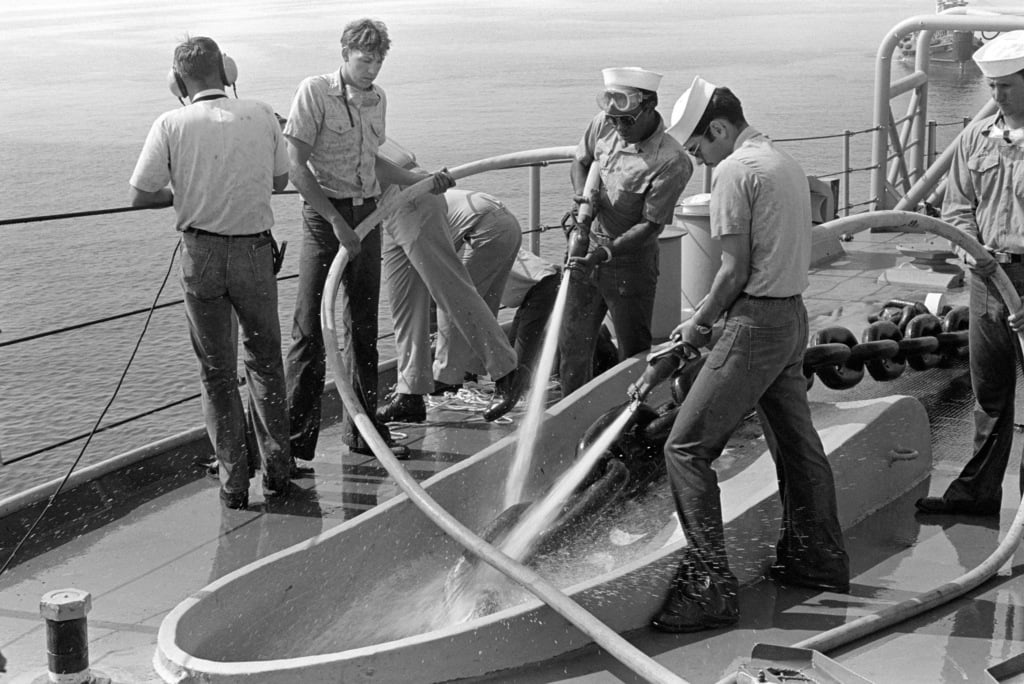
On the USS Procyon, just after we crossed the international date line, the word was passed that if anyone wanted to see the line, they should lie port side #4 cargo hold. SN Peterson (we called him Gyro Pete because he was steady at sea; when the ship tied up, he was always walking into things) came up with his camera and took a picture of the water.
At other times on the “P,” sweepers were being held, and the word was passed that a SEA BAT had been captured on the helo deck. All hands interested in seeing it were to laid on the helo deck. I got there, and a bunch of the crew was standing around with brooms and a 1-gallon bucket upside down on the deck. Most of us held back because of the dateline thing and the Mail Buoy watch in the foc’s’le. BM3 Petway was walking around the bucket, trying to entice some new crew members to go over and look under the bucket. He made the mistake of bending over too far, and one of the other seamen swatted him with a broom. Thus, the Sea Bat.
What profession did you follow after your military service, and what are you doing now? If you are currently serving, what is your present occupational specialty?

After I retired in 1989, I worked for Todd Uniform in Vallejo, CA, distributing mops, clothing, aprons, shop rags, etc.
In the spring of 1991, I went home to be near my dad, who had kidney cancer. I got a job at a place called Environmental Filter Corporation in Salt Lake. The manager/salesman, Arlin Casperson, was a CWO in the Army Reserve and a linguist who spoke Russian. He liked to have the Secretary and me come to his office each morning to take the Isaac Asimov quiz in the newspaper. I was really good at getting the answers. He asked me what my degree was in, and I said high school. He said, Then how do you know all this? I told him I had been reading since I was four, and the SF was one of my main reads.
He convinced me to apply to the University of Utah. I thought this would be a waste of time as I graduated high school with a D-average. However, I had taken some CLEP tests, so with my military experience and the CLEP tests, they accepted me as a sophomore. I received a Bachelor of Science in Human Development and Family Studies with a Minor in Native Americans in 1994.
I was accepted into the Graduate School of Social Work at the University of Utah and received my Master of Social Work (MSW) with an emphasis on therapy in 1996.
I passed the Licensed Clinical Social Worker exam in 1998, allowing me to run my own business. I worked with a group called Professional Services Corporation as a therapist, specializing in Addictions and Domestic Violence. I also work as a dialysis social worker for the VA in Salt Lake. From there, I started working for Magellan Mental Health, doing continuous clinical reviews for people undergoing inpatient chemical dependency treatment. Magellan turned the work they were doing for Aetna Behavioral Health back to them, and I worked for them until I retired from the company in 2011. During this time, I also took training and passed an exam to work as a Substance Abuse Professional (SAP), where I would evaluate and recommend treatment to people who were dealing with substance abuse and were under the US Department of Transportation. The majority of my work as an SAP was done for the Union Pacific Railroad. I entered full disability retirement in 2012, with 100% from the VA and Social Security Disability. The only thing I got from the SSDI was being placed on Medicare at age 62 rather than 65. My income was the same as I had been getting under standard Social Security.
I am now fully retired. I spend time on my computer, reading, and riding my motorcycle.
What military associations are you a member of, if any? What specific benefits do you derive from your memberships?

I have belonged to the NCOA, the VFW.
I am a life member of NERA.
The benefits I receive are the same as those of any other member. In 2012, I received assistance from the VFW in obtaining my disability through the VA.
In what ways has serving in the military influenced the way you have approached your life and your career? What do you miss most about your time in the service?
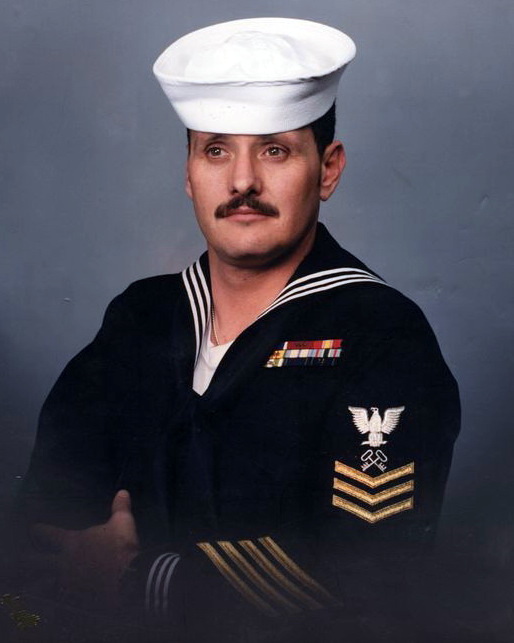
The Navy has taught me to be forthright, follow through on all obligations, keep promises, and be early to any appointment. These were things that I never did before I joined up. They were not important to me as a Teen.
Based on your own experiences, what advice would you give to those who have recently joined the Navy?

If a person goes into the Navy and finds they don’t like it, then rather than become a problem, get all the education you can, go to all the professional schools you can, earn rate and rank as quickly as you can to get as high in pay grade as you can in your 4 years. Then, when you take your discharge and walk away, the Navy will have to spend all that money they spent on you on training someone else to replace you at your skill level.
I used to give this advice to young Sailors who were griping about being in the Navy, some who were complaining that they were had by their Recruiter. They saw this as getting one over on the Navy, yet many of these Sailors ended up reenlisting.
In what ways has TogetherWeServed.com helped you remember your military service and the friends you served with?
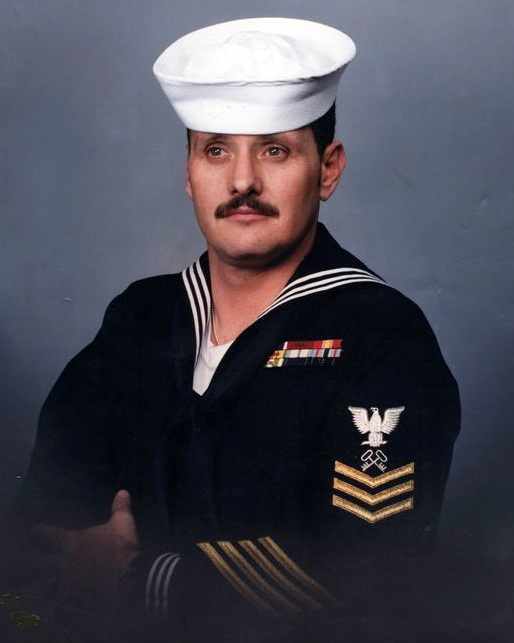
It has prompted me to write down my memories of my time in the service and save them for my children so that they can have a view of my life. I also work with Storyworth writing ansers to questions that my daughter asks from the prepared list and those she comes up with on her own.
PRESERVE YOUR OWN SERVICE MEMORIES!
Boot Camp, Units, Combat Operations
Join Togetherweserved.com to Create a Legacy of Your Service
U.S. Marine Corps, U.S. Navy, U.S. Air Force, U.S. Army, U.S. Coast Guard

Thoroughly enjoyed Richard Lee Wailes article. His long journey was fun for this former SK to read. I served from April 67 to Januaryu 71, got out 3 months early to attend jr. college. Had good fortune to find myself sent to small supply office in the Washington Navy Yard upon graduation from great lakes company 194 DC1 Johnson CC. The SKC (Lintz) had a friend in BUPERs and he got me orders to SK A school in Newport Rhode Island for ten weeks…then off to new build USS San Diego AFS-6..plankowner…SKSN Dec of 68. Worked in S1 department..left ship SK2…Liked how Richard was proud of the fact he got to train other SK’s….overall enjoyable input by Richard.